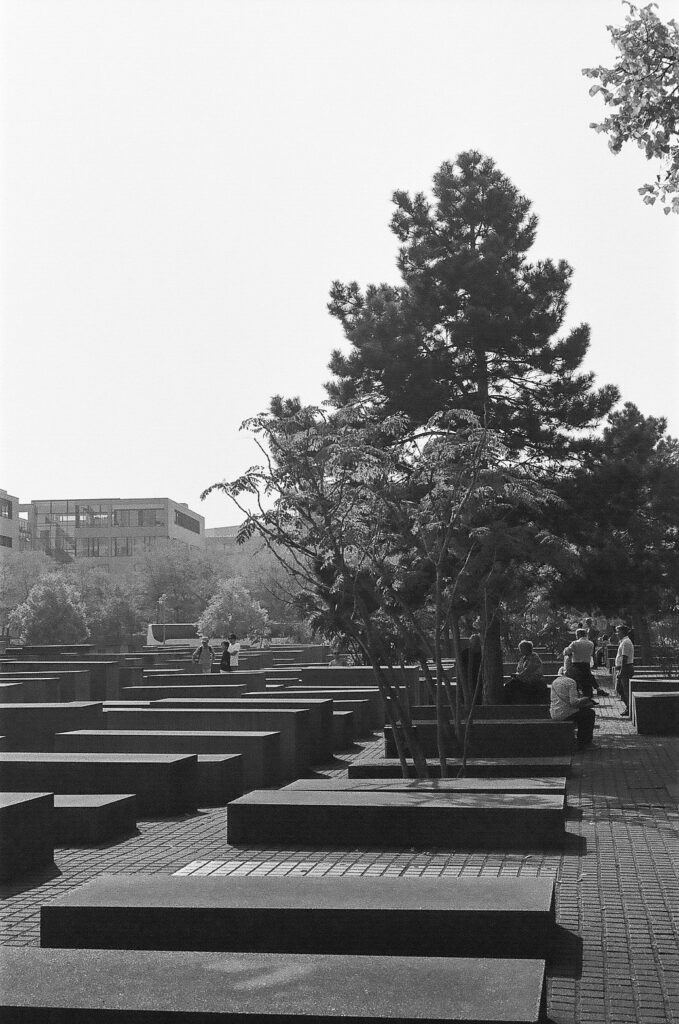About a year ago, as my wife and I began planning our recent trip to Berlin, Munich and Amsterdam, my thoughts immediately turned to photography. I can’t be the first member of this website who thinks the same way. Right?
Imagining the private walking tour of Berlin, I thought about David Bowie. I know, this isn’t a music site. Nonetheless, I thought about his Thin White Duke era, as well as all the music he produced in Berlin. It all evoked in me thoughts of Cold War images we’d all seen in the 70s and 80s. Cold, brutalist and tense were all adjectives which came to mind as I pictured the city. As Bowie’s “DJ” and “Heroes” echoed through my head, I knew I would approach photography on this trip: my trusty Leica M3, the superb Summicron-M 50mm f/2, all shot on Ilford HP5. No color.
Before we set off on our first epic walking tour, my wife and I found a cafe on Unter den Linden a few blocks from our hotel for breakfast. The light coming through the window grabbed me, and had me testing my dear wife’s patience as I delayed much-needed coffee while making this shot.

Our first tour stop was to the Memorial to the Murdered Jews of Europe. The morning light ricocheted off the 2,711 stelae. Their varying heights and the pathways between them were framed by the tops of the lush trees from nearby Tiergarten Park to the north, apartment and office buildings on the remaining three sides. At this moment, I knew I had made the right film choice.

Along Wilhemstrasse, we encountered the Detlev Rohwedder Building and learned of its history as the Reich Aviation Ministry office, and its present day use by the finance ministry. Still in place is the enormous mural depicting the glory of socialism. The mural’s translated title is The Importance of Peace for the Cultural Development of Humanity and the Need to Fight for it. Rolls right off the tongue. Whatever socialist utopia the GDR may have envisioned never came to fruition. Rather, as one can see depicted in the glass were throngs of folks trying to escape. Reflected in the glass are the ministry windows.

Across the street, we found a large section of the Berlin Wall which still remains, and the Topography of Terror museum which sits where the ruins of the SS headquarters and a section of the no man’s land once stood. Here, every aspect of the Holocaust is documented without a filter. The wall pictured is covered by indictments brought during the Nuremberg Trials.

The next day we walked to the Jewish Museum. This place could easily garner its own “Five Frames.” It chronicles the history of Jews in Germany going back centuries. Naturally, the Holocaust remembrances are noteworthy, as is the intentionally disorienting construction of the building itself. Most jarring, however, was a piece called Shalekhet, or “Fallen Leaves.” Built into one of the many voids in the asymmetrical building, it uses faces cut from steel plate to represent the voiceless victims of oppression. Walking across the plates creates an eerie clanking sound. It’s a breathtaking exhibition.

I wanted to convey the stark history of the place. By that metric, I believe it was a success.
Share this post:









Comments
Art Meripol on 5 Frames in Berlin with Leica M3 & Ilford HP5
Comment posted: 06/12/2024
Comment posted: 06/12/2024
Luke Kenny on 5 Frames in Berlin with Leica M3 & Ilford HP5
Comment posted: 09/12/2024
Comment posted: 09/12/2024